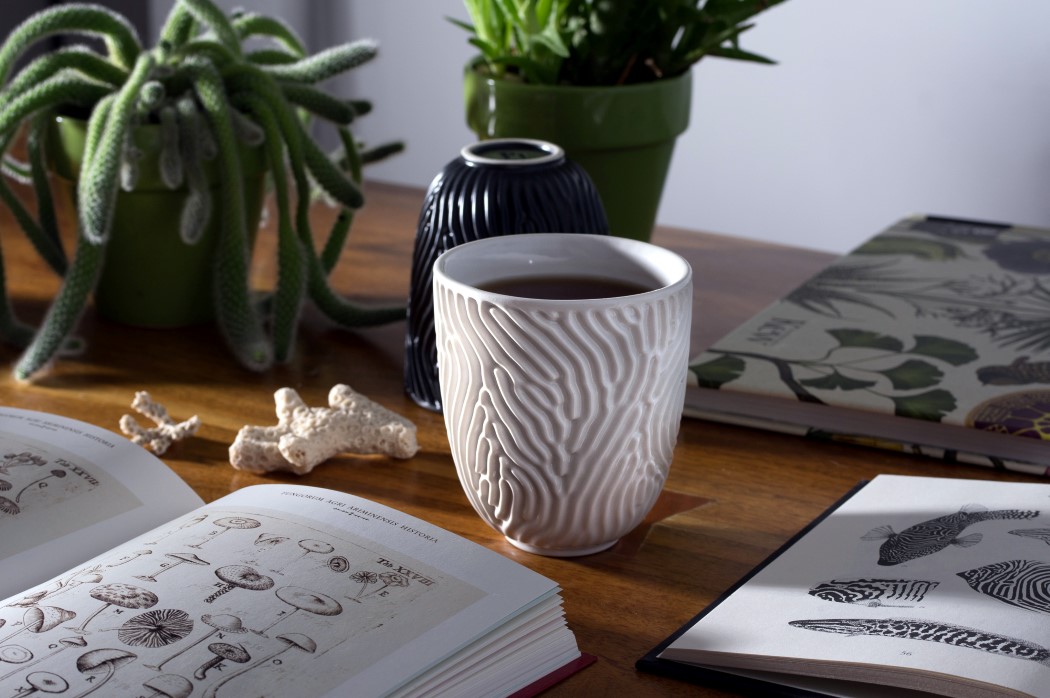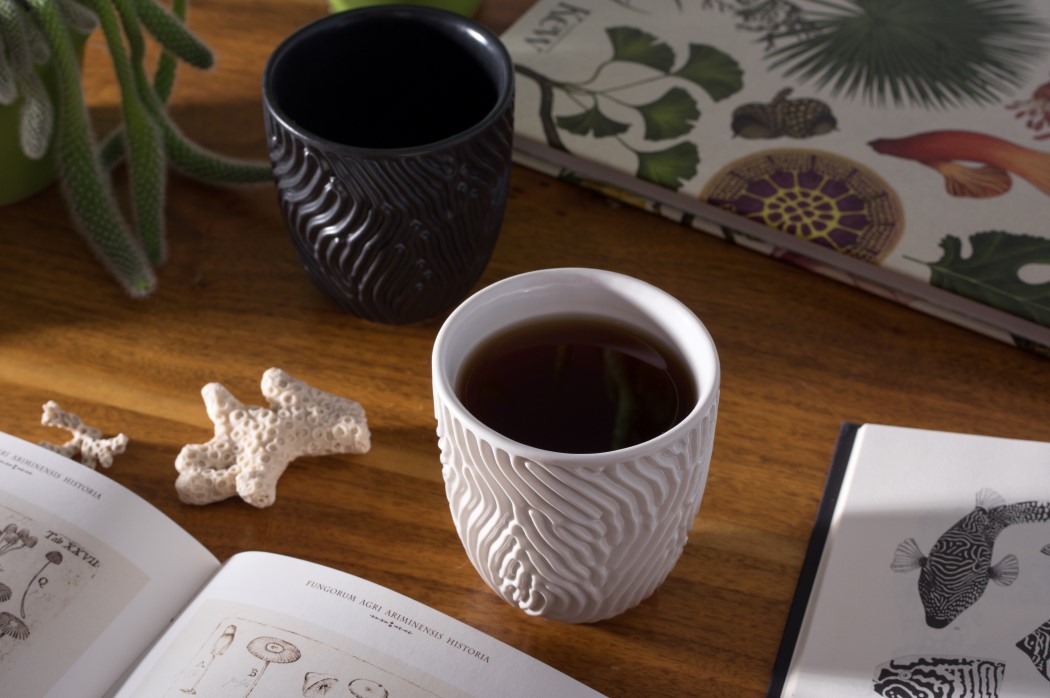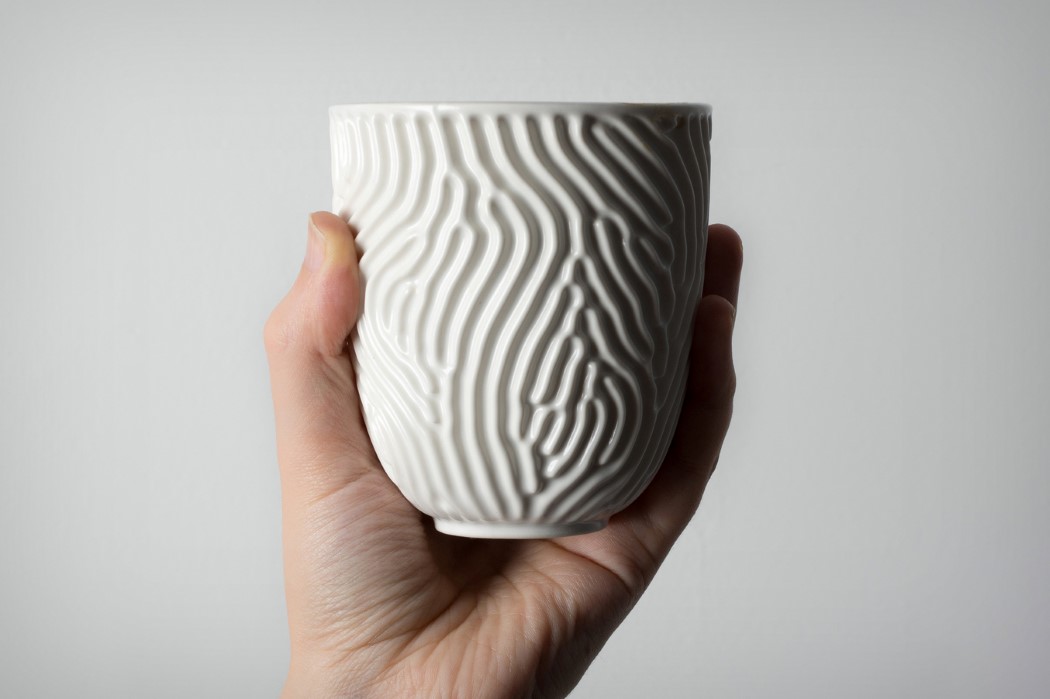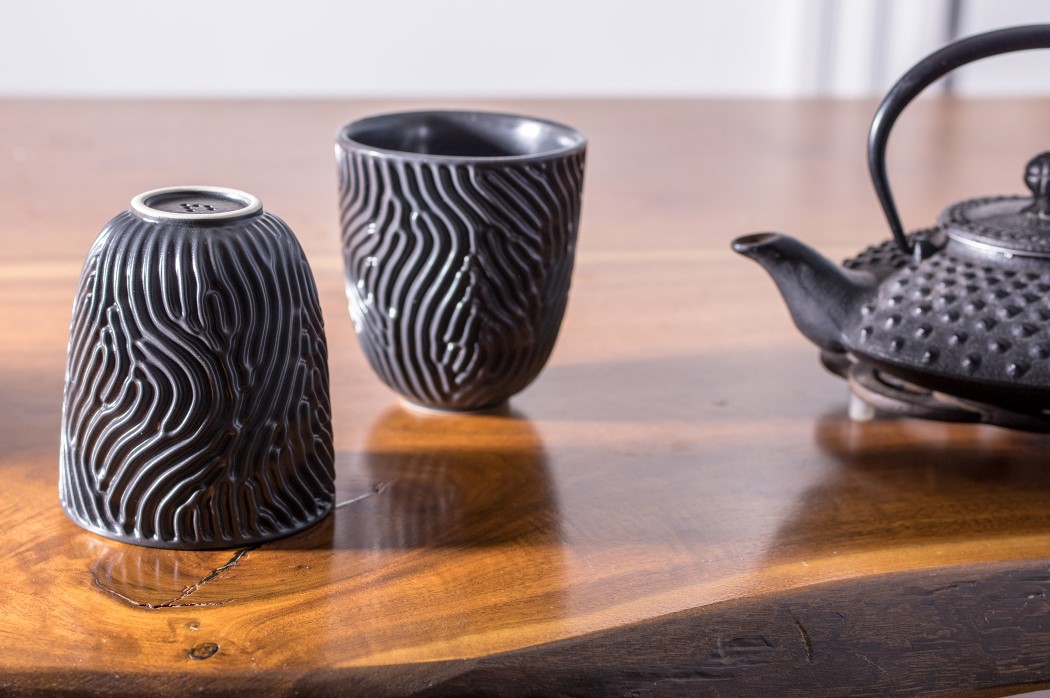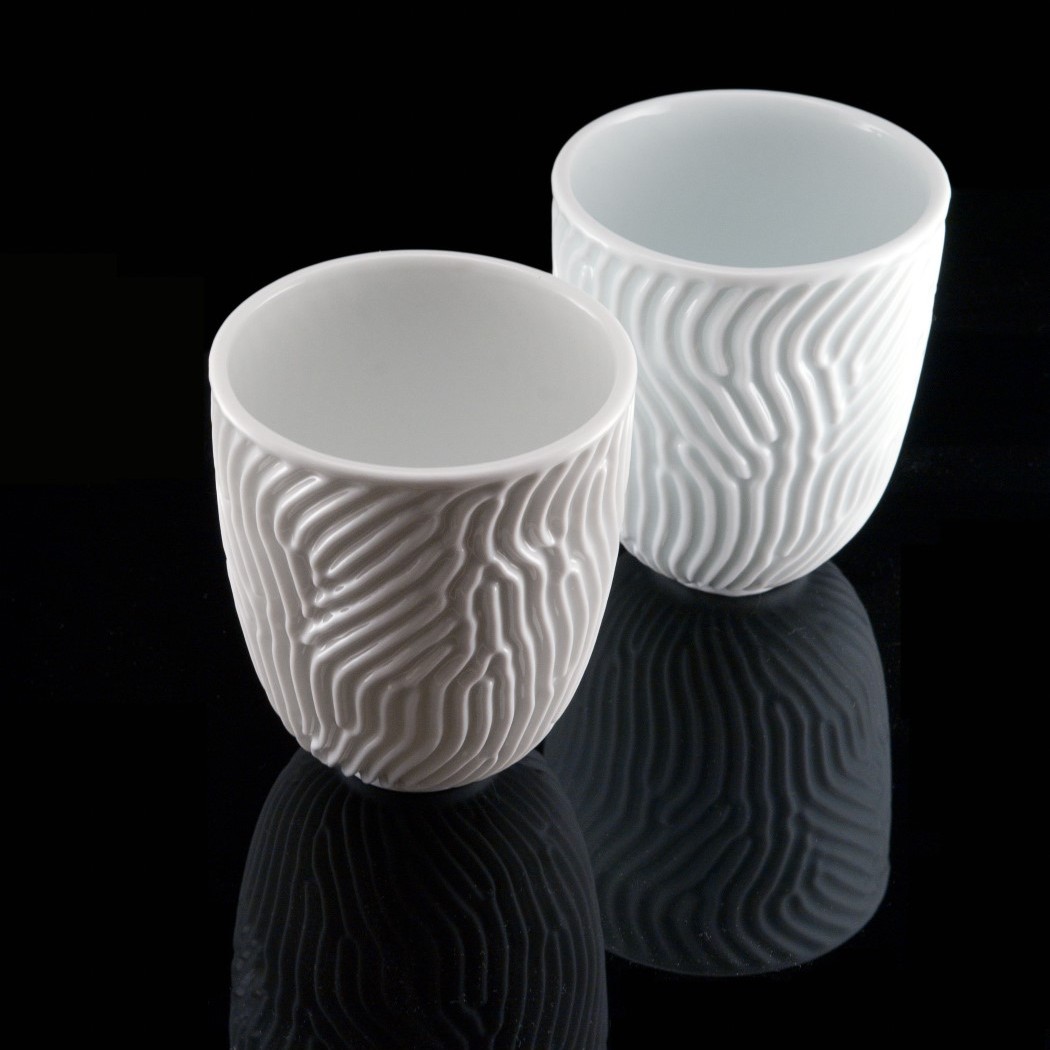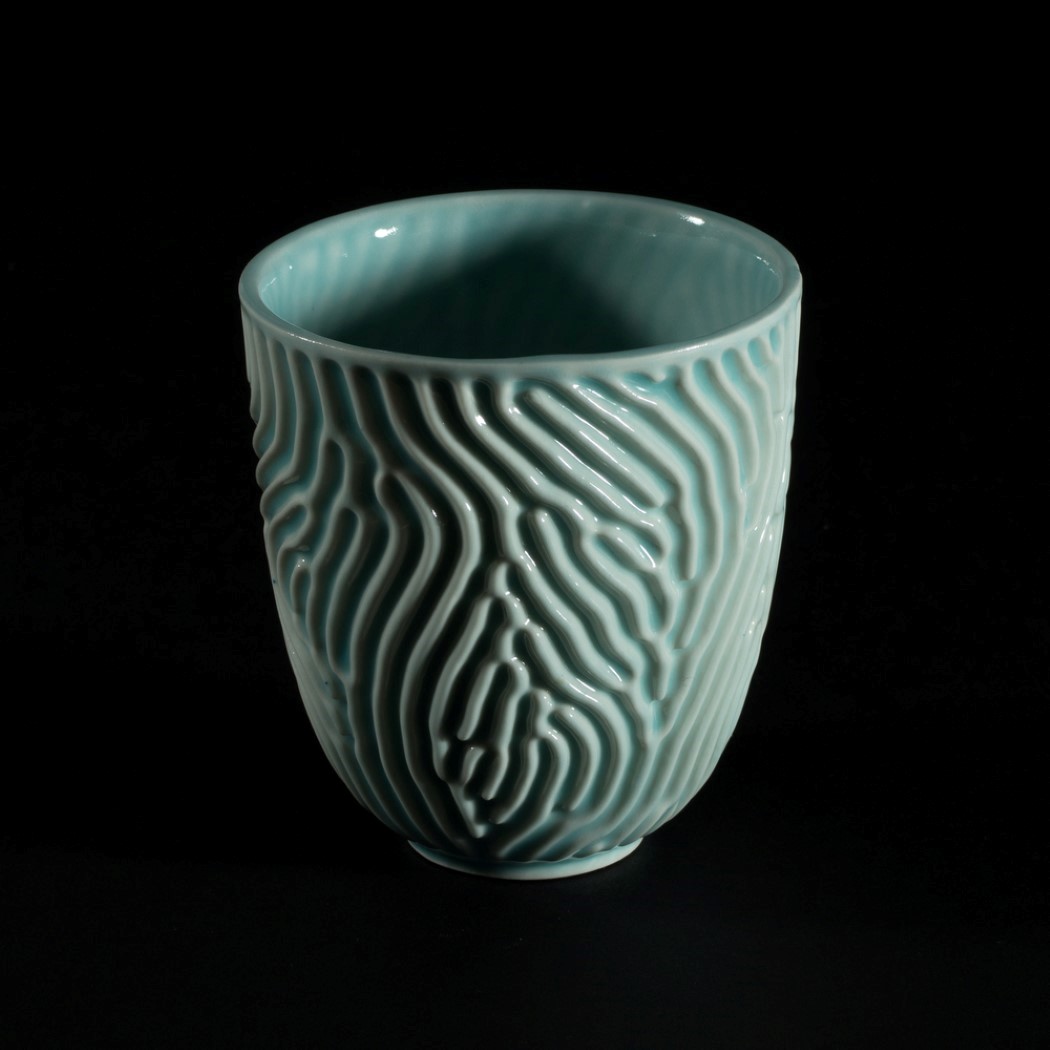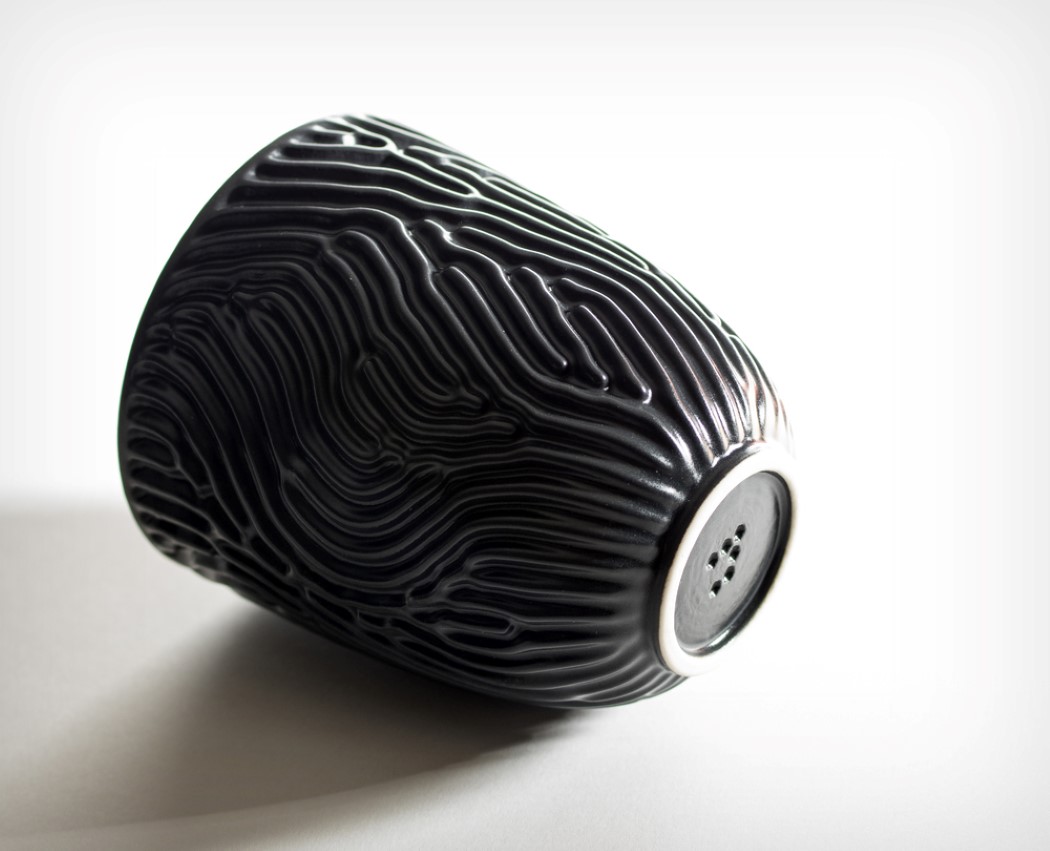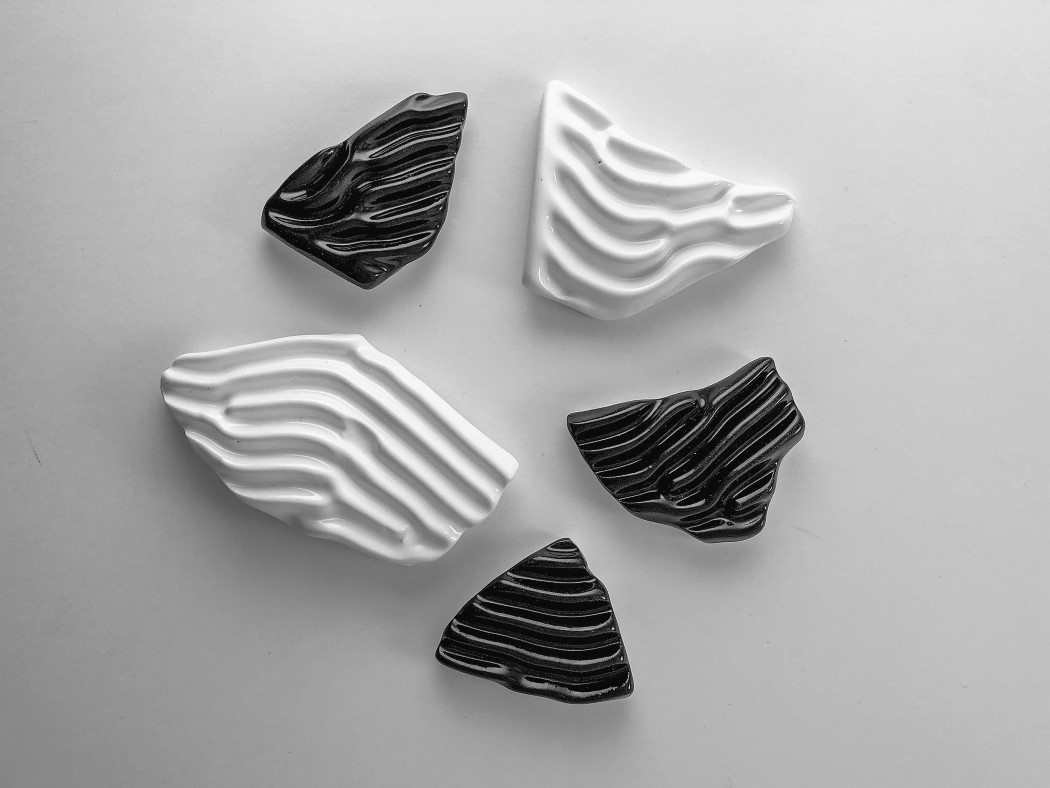Patterns in nature are usually a result of two processes. Diffusion and Reaction. First noticed by Alan Turing (also the man who invented the computer), these two processes, when combined form all the patterns we know in nature, from the stripes on a tiger or a zebra, to the texture on a coral. Devoting their time to computationally perfecting this algorithm and using it in the design process is Nervous System, a Massachusetts based studio. The Coral Cup, a result of those efforts, uses computationally generated design on its exterior. The ridges are inspired by the ones found on brain coral, and look stunning on the cup, creating a wonderful play between light and shade, while also being an incredible tactile experience in themselves (it’s worth noting they look quite similar to fingerprints too!)
The molds for the Coral Cup are made in-house and use a clever design to help conceal the parting lines within the coral texture. Each cup is slip-casted in porcelain and can be bought on the Nervous System website now!
Designer: Nervous System
